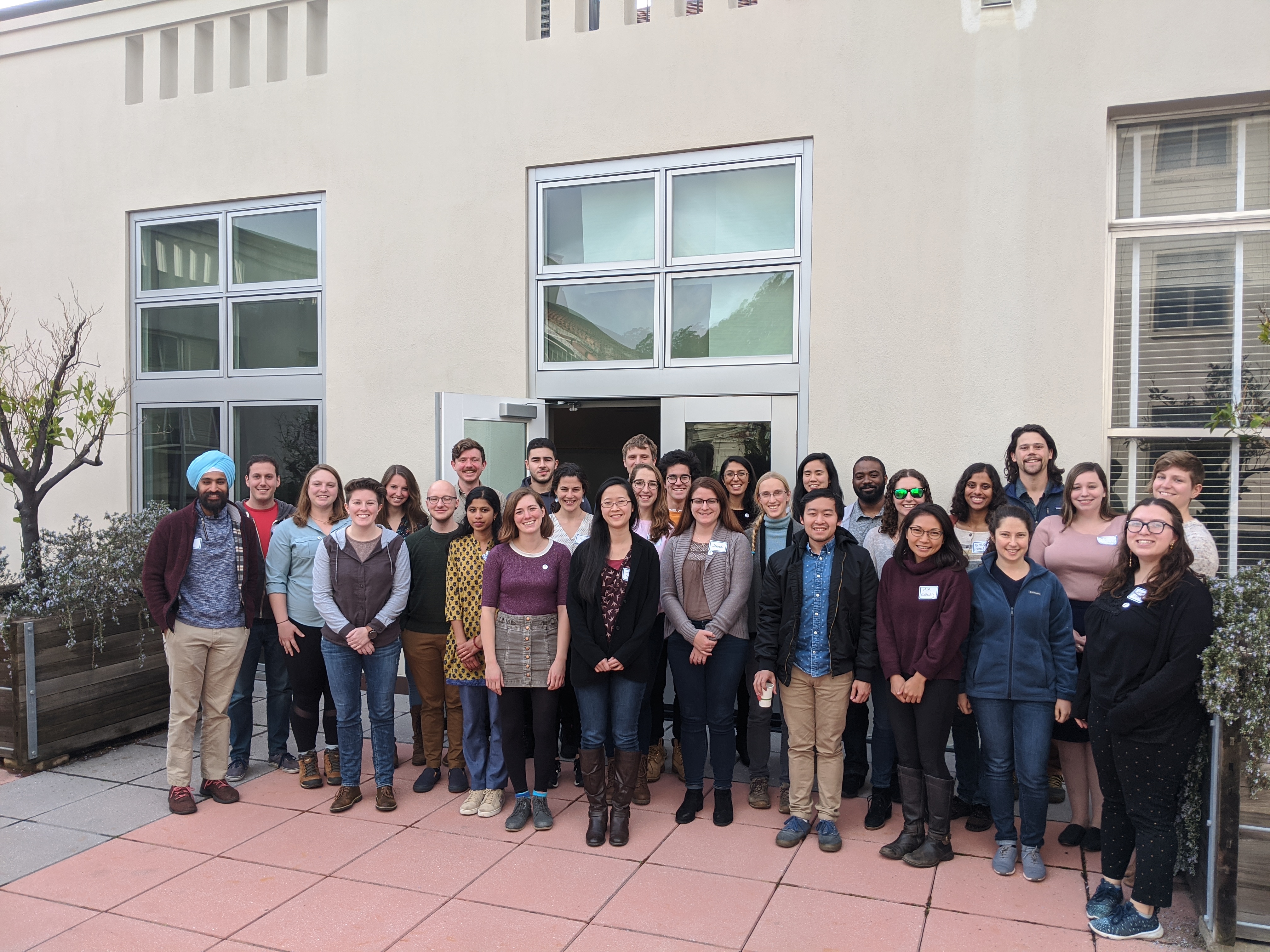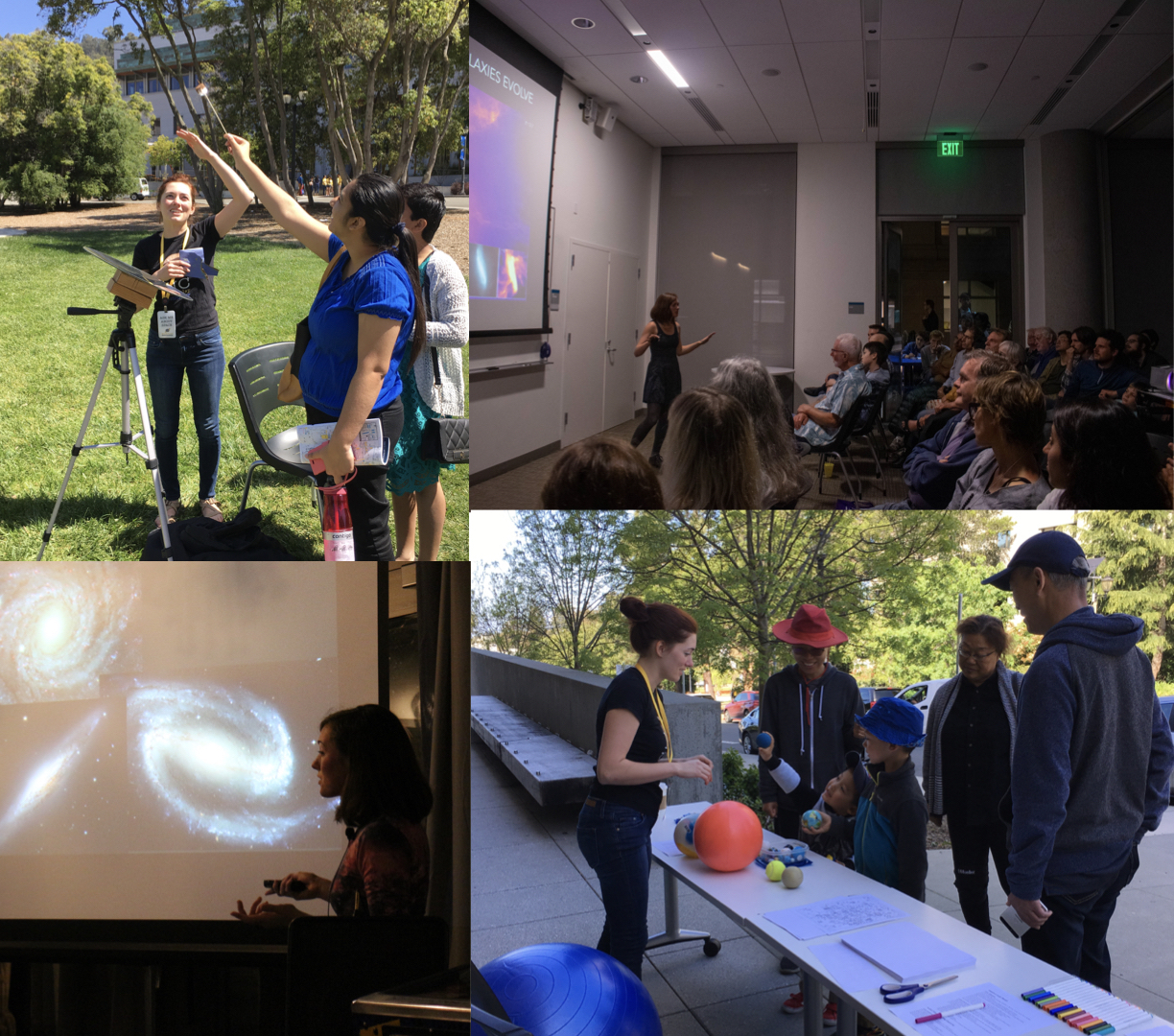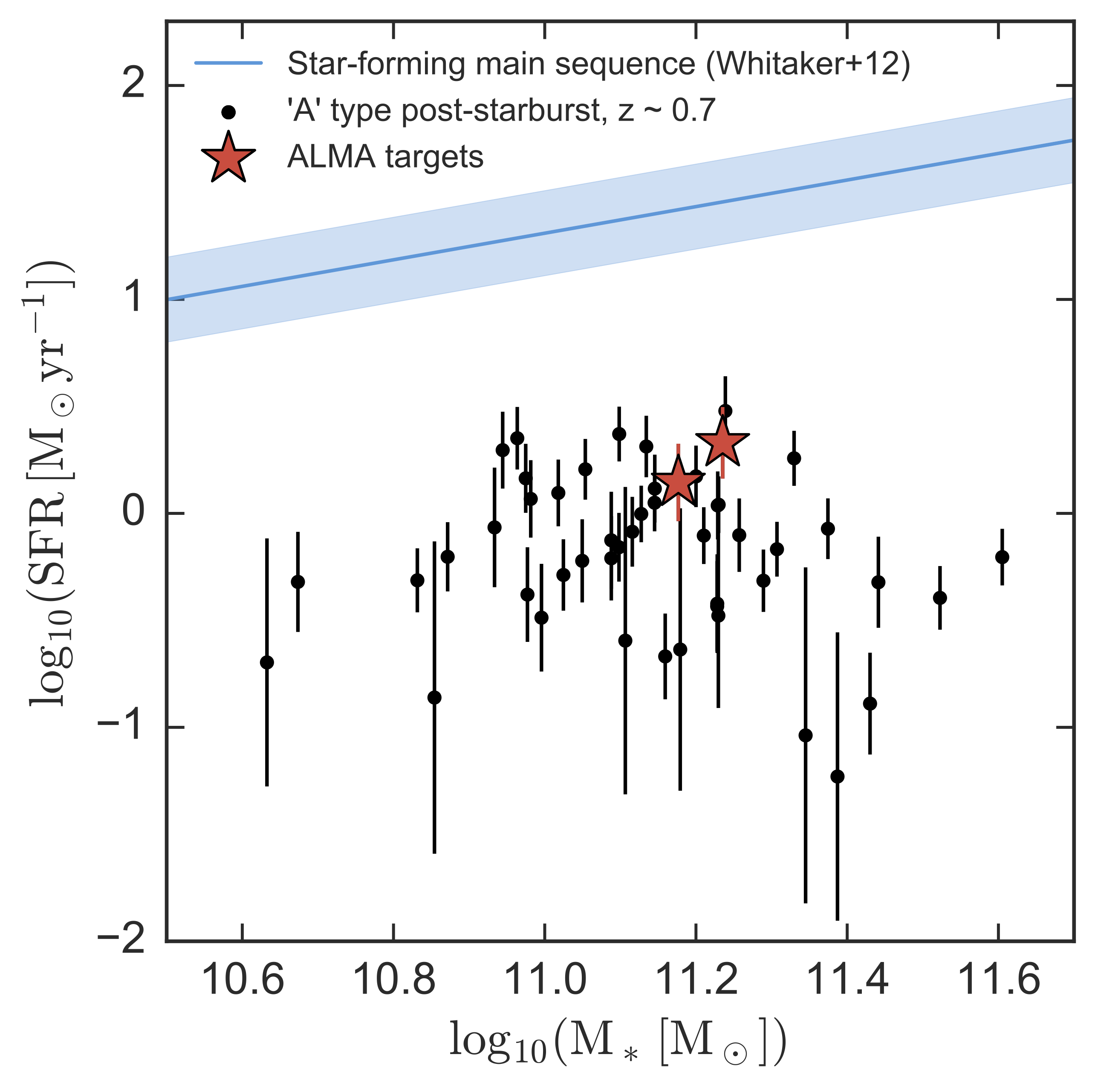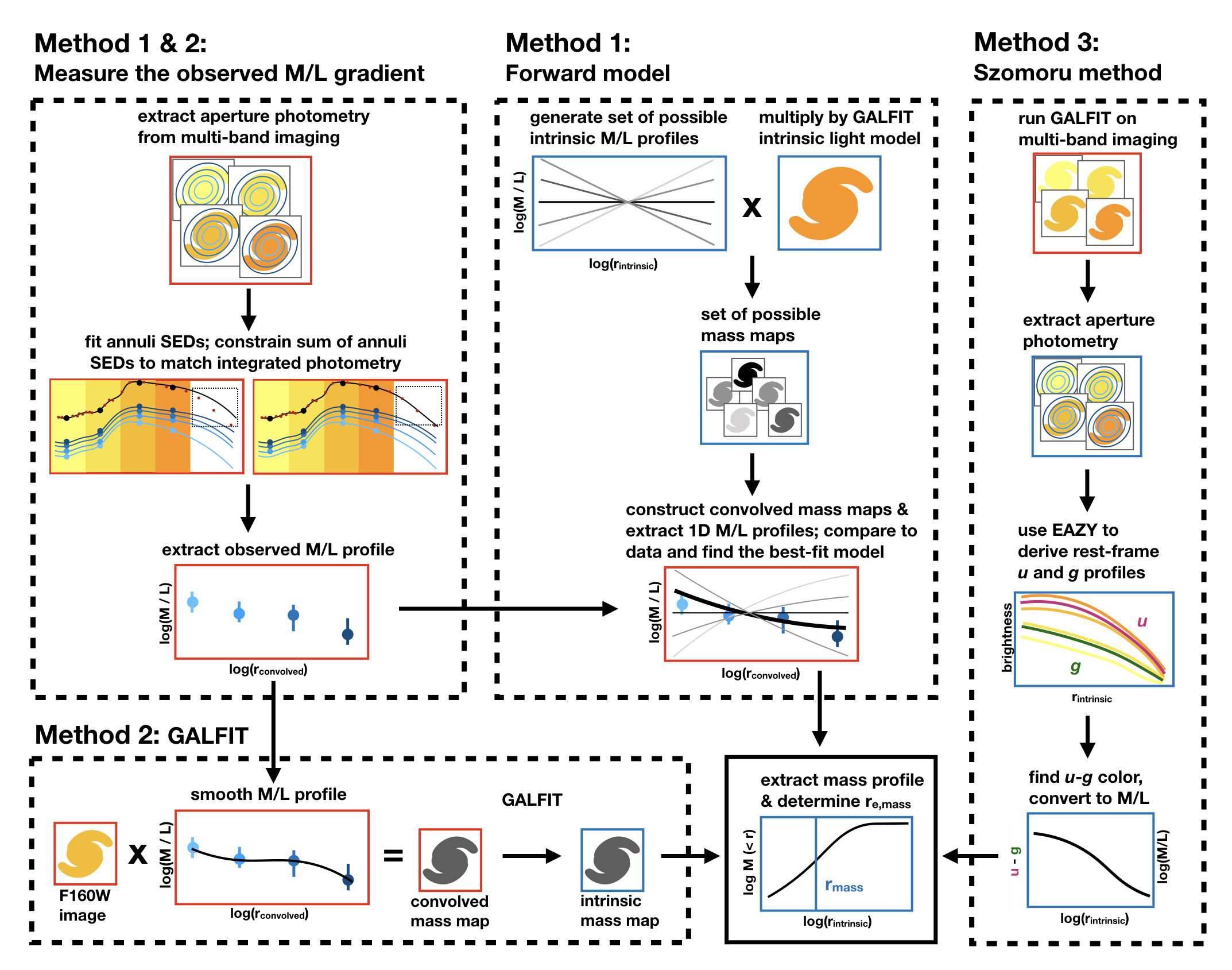Wren Suess
Astronomer
Assistant Professor, University of Colorado Boulder

I'm currently an Assistant Professor of Astrophysical and Planetary Sciences at the University of Colorado Boulder. I study the formation and evolution of galaxies using data from across the spectrum, optical to radio. I'm interested in radial color gradients in galaxies, both as a bias in size measurements and as an independent probe of galaxy evolution. I also use multi-wavelength observations of post-starburst galaxies to investigate the physical mechanisms that cause galaxies to stop forming stars. I publish under my full name, Katherine A. Suess. I am the PI of the ``Medium Bands, Mega Science" survey, and an active member of the SQuIGGLE collaboration and the UNCOVER team. I got my PhD from the UC Berkeley Department of Astronomy, where I was an NSF Graduate Research Fellow and a UC Berkeley Graduate Chancellor's Fellow. My primary thesis advisor was Mariska Kriek. After finishing my PhD, I was a Stanford-Santa Cruz Cosmology Fellow and a Hubble Fellow at KIPAC. I studied physics in undergrad at the University of Colorado, Boulder.
My CV Publications (ADS)Right now, I'm primarily preoccupied by two questions. How do galaxies grow? And what makes galaxies stop forming stars? To study galaxy growth, I use multi-band high-resolution imaging from the Hubble Space Telescope and the new James Webb Space Telescope to measure radial color gradients in galaxies. These color gradients can bias measurements of galaxy sizes, affecting our understanding of how galaxies grow. But color gradients aren't just a bias, they're an additional independent way to probe galaxy evolution: they represent radial variations in stellar population properties, and can thus shed light on how galaxies assemble their mass.I also study galaxy "quenching," the process that transforms disky blue star-forming galaxies into red elliptical quiescent galaxies. I primarily study this transition by investigating post-starburst galaxies. These rare galaxies have just completed their major star-forming episode; since they represent the direct products of the quenching process, they're the ideal laboratory to understand what causes galaxies to quench. Check out my recent first-author papers here.
 I'm passionate about improving the climate in physics & astronomy. In graduate school, I was one of two lead coordinators for Respect is Part of Research, a graduate student group that runs annual peer-led sexual assault and sexual harassment prevention workshops for incoming first-year graduate students. RPR's primary mission is to create a respectful, positive working environment where everyone can do their best science. While our main focus is on gender-based discrimination in order to fulfill official UC and Title IX requirements, we acknowledge that prevention work must be intersectional. As such, our workshop also addresses microagressions, stereotype threat, and effective bystander intervention. As of 2020, RPR was active in eight STEM departments at UC Berkeley; in 2019, I led training for 57 peer facilitators and 278 incoming graduate students. In January 2020, I also led a two-day workshop attended by ~25 physics & astronomy grad students from a dozen different institutions to teach them how to start their own peer-led climate workshops in their home departments. As of fall 2020, five new RPR chapters have already been started as a result of this workshop. Please contact me if you're interested in learning more about RPR, or want to start a similar peer-led workshop at your own institution! As part of this effort, I served on the Coordinated Community Review Team for Sexual and Gender-Based Violence and Misconduct for two years.
I'm passionate about improving the climate in physics & astronomy. In graduate school, I was one of two lead coordinators for Respect is Part of Research, a graduate student group that runs annual peer-led sexual assault and sexual harassment prevention workshops for incoming first-year graduate students. RPR's primary mission is to create a respectful, positive working environment where everyone can do their best science. While our main focus is on gender-based discrimination in order to fulfill official UC and Title IX requirements, we acknowledge that prevention work must be intersectional. As such, our workshop also addresses microagressions, stereotype threat, and effective bystander intervention. As of 2020, RPR was active in eight STEM departments at UC Berkeley; in 2019, I led training for 57 peer facilitators and 278 incoming graduate students. In January 2020, I also led a two-day workshop attended by ~25 physics & astronomy grad students from a dozen different institutions to teach them how to start their own peer-led climate workshops in their home departments. As of fall 2020, five new RPR chapters have already been started as a result of this workshop. Please contact me if you're interested in learning more about RPR, or want to start a similar peer-led workshop at your own institution! As part of this effort, I served on the Coordinated Community Review Team for Sexual and Gender-Based Violence and Misconduct for two years.
 In addition to research and service within astronomy, I love sharing my passion for astronomy with the public. Find me at Cal Day, Grounds for Science, or Astro Night
In addition to research and service within astronomy, I love sharing my passion for astronomy with the public. Find me at Cal Day, Grounds for Science, or Astro Night
 Here's the full post-starburst galaxy sample from Suess+17. The sample is selected from bright (i < 19), intermediate-redshift (z > 0.5), high-quality (median spectral S/N > 3.7) objects included in the full SDSS DR12 spectroscopic catalog (Alam et al. 2015). Post-starburst galaxies were selected from this parent sample according to the Kriek et al. 2010 method, which selects galaxies with "A-type" spectra by their strong Balmer breaks and their blue slopes redward of the break. We checked the final selection by eye to remove a few stars and brown dwarfs. In total, we found 50 post-starburst galaxies at 0.5 < z < 0.8. The text file below gives the IDs, redshifts, stellar masses, star-formation rates, and molecular gas masses for each galaxy in the sample. See Suess et al. 2017 for details on how the masses and SFRs listed here were calculated. IDs are 'spec' followed by the SDSS plate number, MJD, and fiber ID: these IDs can be used to query the SDSS database to see images, spectra, and photometry for each galaxy. If you use this sample, please cite Suess et al. 2017.
Here's the full post-starburst galaxy sample from Suess+17. The sample is selected from bright (i < 19), intermediate-redshift (z > 0.5), high-quality (median spectral S/N > 3.7) objects included in the full SDSS DR12 spectroscopic catalog (Alam et al. 2015). Post-starburst galaxies were selected from this parent sample according to the Kriek et al. 2010 method, which selects galaxies with "A-type" spectra by their strong Balmer breaks and their blue slopes redward of the break. We checked the final selection by eye to remove a few stars and brown dwarfs. In total, we found 50 post-starburst galaxies at 0.5 < z < 0.8. The text file below gives the IDs, redshifts, stellar masses, star-formation rates, and molecular gas masses for each galaxy in the sample. See Suess et al. 2017 for details on how the masses and SFRs listed here were calculated. IDs are 'spec' followed by the SDSS plate number, MJD, and fiber ID: these IDs can be used to query the SDSS database to see images, spectra, and photometry for each galaxy. If you use this sample, please cite Suess et al. 2017.
 Here's the catalog of galaxy half-mass radii used in Suess+19a,b. The ID numbers match the v4 3D-HST catalogs. Half-light radii and sersic indices are from the van der Wel et al. 2014 catalog, and the three different "re_mass" measurements correspond to the three methods described in detail in the paper. The "isQui" flag is based on rest-frame UVJ colors, using the 3D-HST catalogs and the Whitaker et al. 2012 quiescent box definition. If you use these measurements, please cite Suess et al. 2019a for methods and z>1 galaxies, and cite Suess et al. 2019b for z<1 galaxies.
Here's the catalog of galaxy half-mass radii used in Suess+19a,b. The ID numbers match the v4 3D-HST catalogs. Half-light radii and sersic indices are from the van der Wel et al. 2014 catalog, and the three different "re_mass" measurements correspond to the three methods described in detail in the paper. The "isQui" flag is based on rest-frame UVJ colors, using the 3D-HST catalogs and the Whitaker et al. 2012 quiescent box definition. If you use these measurements, please cite Suess et al. 2019a for methods and z>1 galaxies, and cite Suess et al. 2019b for z<1 galaxies.